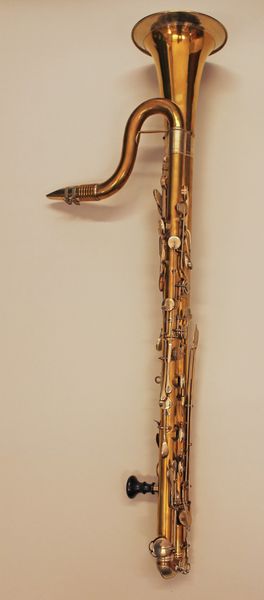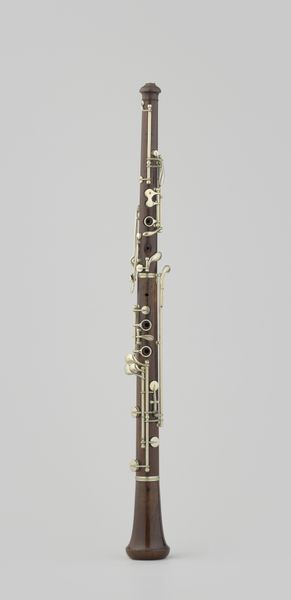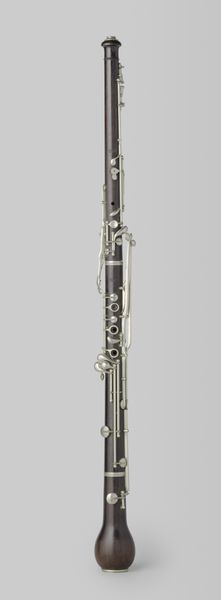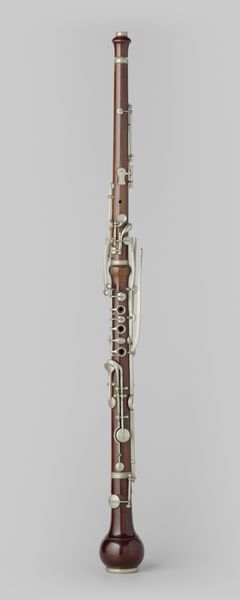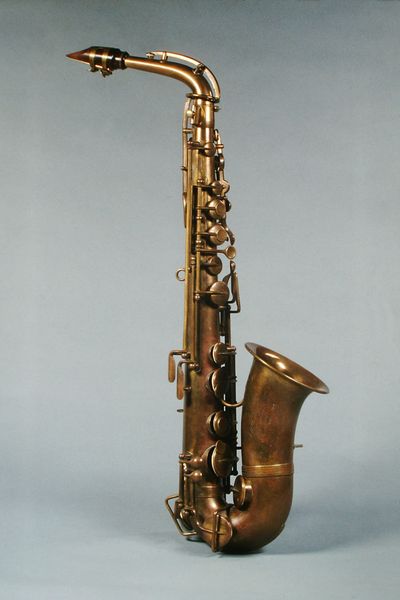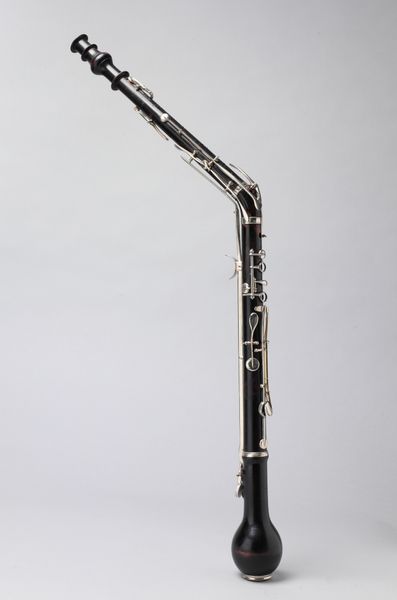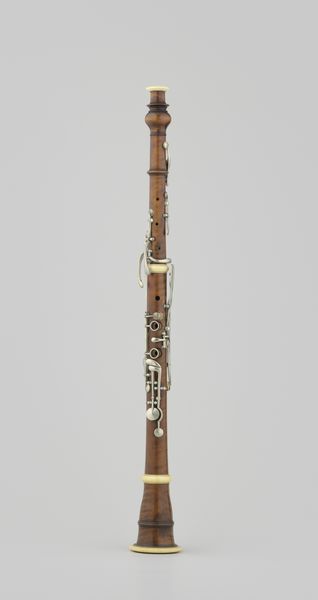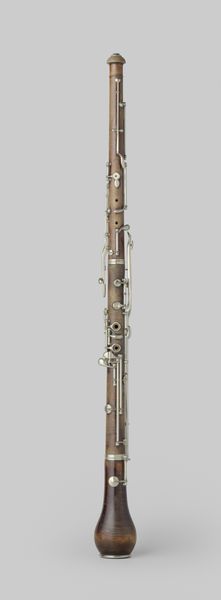
#
sculpture
#
musical-instrument
Dimensions: L. end to end 845mm, Approx. tube L. 1125mm, mouthpiece (excl tenon) 73mm, angle barrel, c. 83mm, upper body section (excl tenon) 270mm, lower body section 351mm, kasten 86mm, erect bell 210 mm, reed cap 65mm
Copyright: Public Domain
Editor: This is a Basset Horn in F, crafted sometime between 1800 and 1870, and currently housed at the Metropolitan Museum of Art. The stark linearity strikes me; how the keys create parallel lines up the body of the instrument. What is your take on this sculptural object? Curator: The Basset Horn, viewed through a formalist lens, presents a fascinating study in the interplay of lines and volumes. The cylindrical bore abruptly contrasts with the conical bell, generating a visual tension. Note also the meticulous arrangement of keys, their tactile presence disrupting the smooth surfaces and establishing a complex textural dynamic. What structural relationships emerge for you? Editor: I see a tension between the instrument's sleek form and the ornate key work. The keys jut out; almost like disruptive outgrowths of this otherwise very sleek object. Do you think this piece benefits from any additional theoretical grounding? Curator: Absolutely. Let us consider the use of space, the positive form of the instrument set against the implied volume around it. Note that the light accentuates its contours; highlighting the physical boundaries. Think of it as a study of spatial articulation and formal arrangement rather than an attempt to create a recognizable instrument. Editor: That reframes how I was understanding this piece; it really allows one to see it less as a functional instrument, and more as an artwork on its own merits of structure, shape and contrast. Thanks for the new point of view. Curator: Indeed; by bracketing away from functional interpretations, the artwork can fully express the material condition on which it depends.
Comments
No comments
Be the first to comment and join the conversation on the ultimate creative platform.
